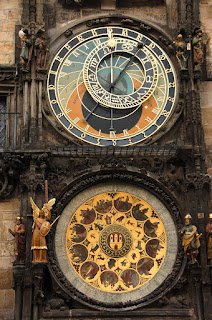I often wonder if we Malaysians give enough thought towards preserving our past. As we modernize and globalize, it is often easy to overlook the past.
We demolish old and run-down buildings and don’t think twice about building spanking new ones. We clear forests, relocate settlements, blast tunnels out of hills, all in the name of development.
It is as if the past and the present can’t co-exist. We call it city planning when we widen roads, build highways and tear down shophouses to make way for commercial squares.
I often wonder — if we just try harder, wouldn’t we be able to blend past and present just like they do in Prague?
I spent five days in Prague last summer, and experienced the sights and sounds of a city steeped in history, where its people celebrate the past by reliving traditions, retelling legends and myths, while enjoying the comforts and conveniences of the modern world.
As I entered this fairy tale city, I feasted on the sight of wonderfully ancient buildings prominently featured throughout the city against a backdrop of modern buildings and amenities. It was a magical sight guaranteed to make one gasp, but it was also clear that this was a progressive, modern city catered for today’s inhabitants.
They added to their city as they evolved with time, but they cleverly built around their history. They did not demolish, burn, tear down. They preserved them lovingly and did a wonderful job blending the past and present for the future. A few landmarks stayed in my memory and I thought I would share them.
Sunset @ The Vltava Picturesque Prague
Charles Bridge
Construction began in 1357, and was only completed in the beginning of the 15th century. This was the only way inhabitants crossed the Vltava, the longest river in Czech Republic. In the past, people would cross the bridge on foot or on carriages and commerce and trade thrived on the bridge itself and the surrounding area. Imagine street performers and people selling their wares to all who desired to cross the bridge.
Today, city planners have built additional bridges across the same river, those which enable modern day vehicles to pass. There are trams, cars and buses, all effectively ferrying people from one side of the river to the other.
However, Charles Bridge is still beautifully preserved and features prominently in the city. All visitors get a good view of the bridge, and everyone gets a chance to admire it from far and up close. The bridge is closed to vehicles but I took a wonderfully long walk across the bridge, stopping to enjoy street performers, buy trinkets and souvenirs, take pictures and enjoy the experience.
It co-exists with the modern day world and adds character to the city.
The city planners had the foresight to plan for the future with the past in mind and so people like me can enjoy it. How brilliant.
Charles Bridge
Street musicians entertaining us on the bridge
Charles Bridge
Street musicians entertaining us on the bridge
The Astronomical Clock
Located in the old town square and built in 1410 by Master Janus, this is the third oldest astronomical clock in the world, and the oldest working one. Once completed, the clock attracted visitors from around the world. Travelers from far wanted to see the clock, and the town council at the time earned a lot of money from the trade which these visitors brought to the city. Imagine the old town square as a hive of activity, locals selling their wares and trade robust. The city became wealthy, and people prospered.
One day, the town council members, fearing that Master Janus would make another clock somewhere else to compete with this one, conspired to blind him. They lured him into the clock tower and shoved red hot pokers into his eyes, causing him pain and anguish. When he realised what was done to him and why, he painstakingly made his way to the top of the tower and broke the clock, taking his last breath at the same second. The clock remained broken for a century, said to be cursed by Master Janus.
The city suffered as people stayed away from the cursed clock and no one would fix it, fearing that the town council members would commit the same treachery on them.
Whether it is pure folklore or actual history, I enjoyed the story and found it fascinating. The guide who took me for a walk around the square told it with passion and reverence and I couldn’t help but feel enlightened in some way. It definitely added to my overall experience of the city. I stopped for coffee at Starbucks and the people there knew the story as well. It was common knowledge and not only did the people of Prague preserve their buildings, they also took pains to share their legends, myths, stories and history with the next generation, and the next.
Every hour on the hour, everyone would gather beneath the clock. A trumpeter would blow his horn, the clock would clang and everyone around would cheer and applaud. This is a tradition which started from the day the clock was completed and the same tradition is now carried out today.
Modern cafes surround the tower and modern day vehicles dart in and our of the square as people go about their business.
The trumpeter still blows his horn and his present day audience still cheer him on.
What a perfect blend.
Note: First posted in www.loyarburok.com on 21 Feb 2012.







No comments:
Post a Comment